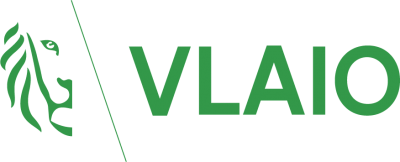Topics
We organise our actions in six thematic & strategic agendas:
Strategic Agendas:
Bio-economy
Circular Construction
Chemicals/Plastics
Manufacturing Industry
Food Chain
Water Cycles
Seven leverages provide additional support:
Leverage effects:
Lever Policy Instruments
Lever Circular Procurement
Lever Communication
Lever Innovation & Entrepreneurship
Lever Financing
Lever Jobs & Skills
Lever Research
What, why and how?
Why are we pursuing a circular economy?
Future visions 2050
How do we see our circular future?
About our management
Who steers what at Flanders Circular?
Financing new circular business models
Where are the bottlenecks and where are the solutions?
The circular economy is currently in full development. What you used to have to buy, you can now increasingly use, share or rent. Hundreds of circular projects have already been developed in our country in response to this, but they are often still in the start-up phase. If they are to have a significant impact on the environment and the economy, scaling up is nevertheless essential. Unfortunately, the growth of such projects is often hampered by a lack of financial knowledge and appropriate means of financing, among other things.
As a financial service provider, Econocom wants to do something about this. We want to offer companies with circular projects a higher chance of success and give the circular economy a boost. We drew up an extensive report in which we aim to answer the most important questions on circular financing and propose new business and financing models.
For this report, Econocom analysed the problems and opportunities in the financing of circular projects for the three parties involved: companies, governments and financial partners, and this on a business-to-business (B2B) or business-to-consumer (B2B2C) level. The financial solutions are therefore not intended directly for private individuals.
The report contains a number of successful practical examples and, for each party involved, an overview of the current bottlenecks and misunderstandings, linked to opportunities and a whole series of recommendations.
Econocom Lease
Partners Belfius Lease Services
Sectors
Themes
Organisations
Website
MOST IMPORTANT
RESULTS
- In order to broaden the (financial) knowledge of circular economy and entrepreneurship and to eliminate misconceptions, the report first focuses extensively on the concept of circular economy and the concept of leasing.
- Econocom also takes a closer look at the experiences of two companies that have taken the step towards circular enterprise. We look at how they have turned the challenges of their circular financing into a success story, supplemented with our own experiences.
- The report clarifies a whole series of existing misunderstandings and challenges (e.g. about leasing) with corresponding opportunities, for companies, financial partners and governments alike.
- Finally, Econocom gives concrete advice to stimulate the financing of circular economy. We show the importance of active collaboration between companies, financial institutions and governments and give a series of concrete recommendations for each of the parties involved.
MOST IMPORTANT
LESSONS LEARNED
- Circular business models aim to maximise the use of raw materials and products, for example through repair or reuse. There is a clear need for financing models that take into account the extended lifetime of products and business models with product-service combinations.
- When companies with circular projects apply for loans, the investment risks are still too high compared to the potential return on investment, which limits the opportunities for these initiatives. The instruments exist to spread that investment risk over several parties, but they are not sufficiently known.
- Despite a number of success stories about lease formulas as a means of financing circular business models, the circular economy only takes a small share of the lease market. This is partly due to a number of misconceptions about leasing, which we are trying to dispel.
- The government is aware of the potential of circular models, but still supports mainly linear initiatives. Governments and municipalities should better set an example in circular tenders and procurement, or for example replace blocking regulations with tax incentives.

















